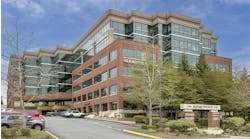One of my hot button issues is “green” mechanical contracting. It’s good for the earth and contractors can make money at it. I’m delighted that Dave Kruse, president of the Mechanical Contractors Association of America, is a fervent green advocate. Kruse has changed up MCAA’s education schedule to host a special green opportunities conference in Milwaukee at the end of this month. We’ll be reporting on the conference, “Catching the Next Wave: A Conference on Seizing the Green Opportunities that Lie Ahead,” in future issues.
Similarly, the Mechanical Service Contractors Association has scheduled a seminar showing service contractors how to take advantage of the green movement at the group’s annual educational conference in mid-October. We’ll be sure to tell you about that.
We’ll be reporting on the Solar Decathlon, to be held on the National Mall in Washington in mid-October. Teams from 20 universities from the U.S. and abroad erect demonstration houses that must be completely energy self-sufficient, deriving all their power from solar energy.
Teams are judged in 10 different categories, seven of which focus on energy efficiency; others include design and comfort of the house. The team with the most points — the most energyefficient and innovatively designed house — wins.
The winner of the last biennial contest in 2005 was the University of Colorado at Boulder, which was aided by the expertise of CONTRACTOR’s hydronic heating columnist Mark Eatherton. Mark’s firm has once again offered design assistance to the Buffaloes, whose design will use a water-to-water heat pump and two tanks for hot and cold water storage. Water from the tanks is used to heat and cool the house.
I can’t get enough of our plumbing columnist Dave Yates putting solar collectors on his house. I hope he keeps it up and keeps telling us how it’s working out. Dave devoted his July and August columns to explaining how spending $10,000 on a solar installation actually comes out costing less money long term. It’s a question of paying now or paying later, Yates pointed out. With conventional water heating, a home owner has to pay continually increasing fuel costs year after year, plus pay for service and maintenance. Water heating equipment has a useful life of about a dozen years and it will cost a whole lot more to replace it in the future, thanks to inflation.
On the subject of the costs of green construction, a study that we’re reporting on the front page of this issue reveals that many people in the commercial construction sectors — contractors, developers and building owners — have an exaggerated idea of how much extra green construction costs.
Key players in real estate and construction misjudge the costs and benefits of green buildings by as much as 300%, creating a major barrier to more energy efficiency in buildings, a new study by the World Business Council for Sustainable Development reports.
One of the co-chairs of the World Business Council for Sustainable Development is United Technologies, the parent of Carrier Corp.
Respondents to a 1,400 person global survey estimated the additional cost of building green at 17% above conventional construction, more than triple the true cost difference of about 5%. At the same time, survey respondents put greenhouse gas emissions by buildings at 19% of world total, while the actual number of 40% is double this.
A study of actual projects in the U.S. showed that the cost premium did not exceed 10% for buildings rated by the U.S. Green Building Council’s Leadership in Energy and Environmental Design at the “platinum” level.
Building professionals in the U.S. guesstimated that buildings contributed 12% of greenhouse gases, rather than the actual 40%. The average guess by building professionals in eight nations was 19%. “Building professionals” were defined as architects, specifiers, contractors, developers, commercial landlords and corporate tenants. The same group in the U.S. guessed that the cost premium for green buildings was 16%, rather than the actual 5%.
There’s so much out there in the marketplace for us to talk about — A.O. Smith has partnered with Ed Begley Jr. on an HGTV show on green housing. Fixture manufacturers are producing dozen of high-efficiency toilets, those that flush with 1.28-gal./flush. A North Carolina homebuilder is working on developing a “mainstream” green home that looks like a traditional home but uses much less water and energy.
We’ll keep you apprised of all of these developments in the months and years ahead.

